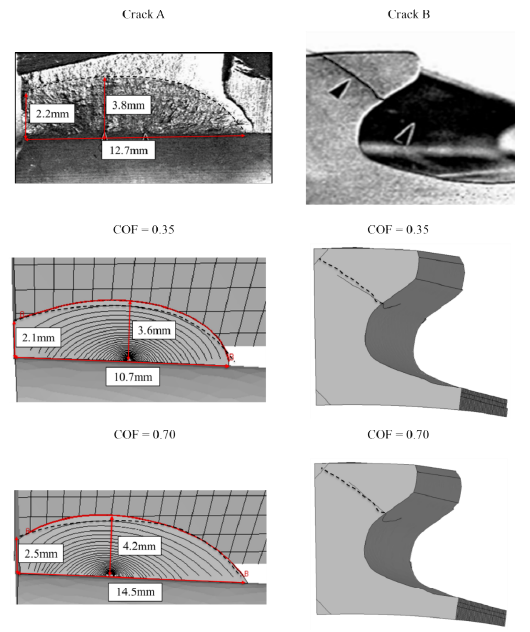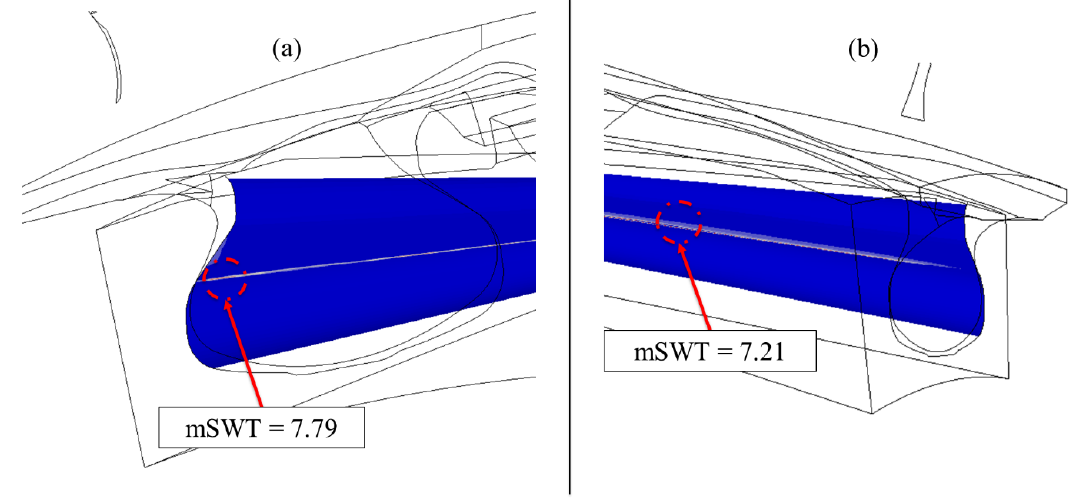解析事例‐4
航空エンジンファン接続部のフレッチング疲労への破壊力学アプローチ
資料より抜粋:
The fretting fatigue and crack propagation of an aircraft engine fan dovetail attachment made of Ti-6Al-4V alloy has been numerically modeled and compared with controlled spin test results. The study suggests the fretting-specific modified SWT parameter predicts the nucleation location of the crack more accurately compared to the plain fatigue SWT parameter. The fretting model uses a prescribed coefficient of friction value of 0.7, obtained through calibration of 3D crack growth simulations with the fractured components in regards to crack trajectory, aspect ratio, shape, and propagation life.

Fig. 1. Outputs of FRANC3D crack growth simulations. Opened fracture surface (Crack A) is compared to the crack mouth produced by simulation at the corresponding crack size and the unopened fracture surface (Crack B) is compared to the final crack iteration. Dashed lines used to trace the opened crack front and trajectory on FRANC3D outputs. The simulation accurately captures the aspect ratio and elliptical shape of the crack, as well as the crack growth trajectory. Using a COF value of 0.70 resulted in more accurate representations of trajectory and aspect ratio.

Fig. 2. Modified SWT parameter calculated at (a) Pressure side (mSWT=7.79) and (b) Suction side (mSWT=7.21). The modified SWT parameter predicts the critical fretting nucleation location to be on the pressure side as opposed to the suction side. A region of high magnitude for the modified SWT is centralized between 2.5 mm to 7.6 mm away from the LE end face, in the chord wise direction. This agrees well with test results.
参照:Mangardich D., Abrari F., Fawaza Z., A fracture mechanics based approach for the fretting fatigue of aircraft engine fan dovetail attachments International Journal of Fatigue, Available online 27 July 2019

